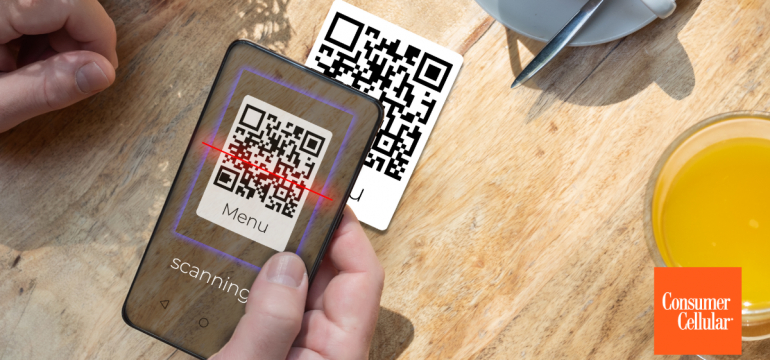Whether it’s been at the grocery store, at the airport, or even the movie theater, chances are you’ve seen a QR code. Created in 1994 to help with the inventory of automobile parts, the QR code was relatively obscure in the United States for decades. But between 2018 and 2020, there was a 94% increase in QR code usage and an even larger increase due to the COVID-19 pandemic. In an effort to curb the spread of the virus, many businesses started using QR codes in lieu of physical items such as menus and tickets.
With that being said, there are still a lot of unanswered questions about this type of technology. In this blog, we will be going over what QR codes are, how to use them, their benefits as well as what to avoid when using them.
What is a QR code?
A QR code is a type of barcode that directs you to a website or webpage. Each QR code contains a series of black squares and dots that represent different types of information. When you point your phone at a QR code, the information that the code has is read and processed in seconds.
How do you use them?
Typically, most smartphones are able to scan QR codes using the camera app. Simply place the camera in view of the QR code, making sure the entire code can be seen within the camera viewfinder. Next, tap on the QR code. A link will then appear and you will be redirected to the desired page. Alternatively, you may be sent a QR code to use in lieu of a physical ticket, such as a concert or at an airport. In this case, you will present your QR code to an attendant and they will scan it for you.
The benefits of QR codes
QR codes create ease of use when it comes to virtually most things. In addition to creating added value and convenience for the consumer, it also allows you to carry traditionally physical items on your phone. This effectively cuts down on paper usage, replacing traditionally printed items like plane and concert tickets with a convenient digital alternative. Additionally, using QR codes in lieu of things like physical menus can cut down on paper and ink usage, which has environmental and economic benefits.
What to avoid with QR codes
While QR codes are commonly available, it is important to make sure that the code you scan is from a valid and secure source. Criminals have been known to alter QR codes in an attempt to gather personal information by those who are not able to tell the difference. Make sure to download all apps from your respective phone’s app store, as downloading a 3rd party app can expose you to potentially fraudulent activity. As a rule of thumb, don’t scan a code from a source that you’re not familiar with. When using QR codes to pay bills or send money, make sure you’re able to verify the source of the code. Prioritizing these safety measures will safeguard your device from potential scams and ensure a safe and secure user experience.
We hope that this rundown of all things QR codes has been helpful to you. The next time you see one of these familiar codes, don’t fear! If you have any additional questions, don’t hesitate to call our U.S. Based customer support staff at (888) 726-7951.
